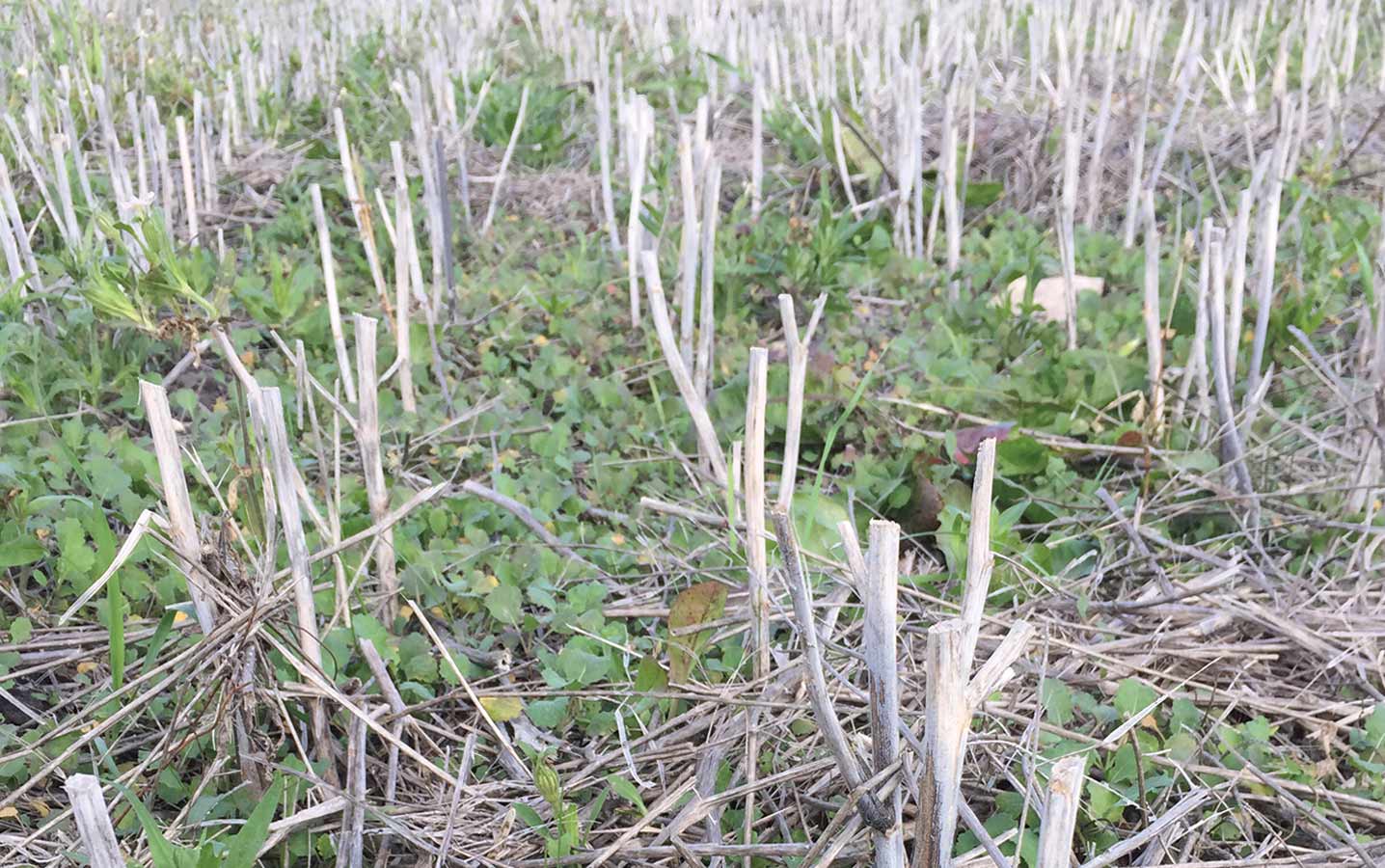Verticillium stripe: Measuring the threat
Fungal pathogens in the verticillium genus affect over 400 plant species worldwide, and can cause major economic losses in crops such as strawberry, cotton, potato and olives. The species Verticillium longisporum, which causes verticillium stripe, affects a number of annual and perennial crops in both temperate and subtropical zones around the globe, including broccoli, cabbage, cauliflower, horseradish, radish and canola. V. longisporum is a different species from the one known to cause verticillium wilt in potatoes and sunflowers in Manitoba and other areas of Canada.
V. longisporum is present in canola in many parts of Europe as well as Japan. While early infection is capable of causing significant yield losses in Europe, severe yield losses of up to 50 per cent have been isolated.
Identification and management
Once the plant is fully ripe, infected stems peel back to reveal tiny black microsclerotia that resemble ground pepper. These microsclerotia remain on the plant stem and are released to soil as stems decompose. (See the sidebar for more on disease symptoms.) They can survive in soil for many years and spread from field to field or farm to farm with soil movement on contaminated equipment, seeds or boots or soil dispersal by surface water or wind.
No foliar or seed treatment fungicides are currently registered for control of verticillium stripe in canola. Management steps include increasing the rotation frequency of non-host crops, control of host weeds, increasing soil fertility and the use of trap crops, green manures and fumigation.
Clint Jurke, agronomy director with the Canola Council of Canada, recently attended the International Verticillium Symposium in Slovenia, and reports that known resistance genes in canola are still rare. “Wherever the disease is found,” Jurke says, “verticillium stripe is pretty much impossible to get rid of.”
Verticillium in Canada
The first V. longisporum infection in Canadian canola was discovered in Manitoba in 2014. Surveys by the Canadian Food Inspection Agency followed in 2015, with infections discovered in other parts of Manitoba as well as Saskatchewan, Alberta, B.C., Ontario and Quebec.
Mario Tenuta was among the first to confirm the arrival of the disease. The first reported site was a research station on clay soil where canola is grown once every four years. “It was likely spotted because the station’s well-trained personnel noted that combining felt different in the afflicted area,” notes the University of Manitoba professor of applied soil ecology. “It can be quite easily overlooked.”
Tenuta is not sure how V. longisporum arrived in Canada. It could have been present on seed, came up on soil from the U.S., or found a foothold through hybridization somewhere on the Canadian Prairies. “We definitely have V. dahliae, which is one of the parents required for V. longisporum,” he notes.
Jurke says the other parent is unknown at this point. “It makes V. longisporum unique,” he explains. “It doesn’t produce the same types of symptoms as V. dahliae, which is a true wilting verticillium. Therefore we are calling it a stripe because of its effect on stems. We don’t want the growers looking for wilt symptoms. The resulting disease caused by V. longisporum on canola or rapeseed is also being renamed across parts of Europe to verticillium stripe.”
No matter how V. longisporum reached Canada, Tenuta says it was just a matter of time. “We do not know if the disease will be serious,” he says. “Given that it is widespread and growers are not noticing a yield hit makes it seem like a minor pathogen. But it is a disease we need to know more about and to keep in mind moving forward. With successive canola crops, can the pathogen become more aggressive?”
Jurke agrees. “It comes in late and seems like a cosmetic thing, but two studies this year, one in Germany and one in the Netherlands, found a 15 to 20 per cent yield loss in both winter and spring canola,” he notes. “Yes, those countries have a longer growing season with more warmth and moisture, so that may be the upper limit of its damage, but we should not assume it will be a cosmetic disease in Canada. We need to understand the basics of this disease.”
Fouad Daayf, professor and head of the Department of Plant Science at the University of Manitoba, notes that if V. longisporum holds the same adaptation abilities as its relatives V. dahliae and V. albo-atrum, “we may speculate that the disease will expand more with time.” His lab first identified V. longisporum in residue from the research station provided by Manitoba Agriculture staff.





